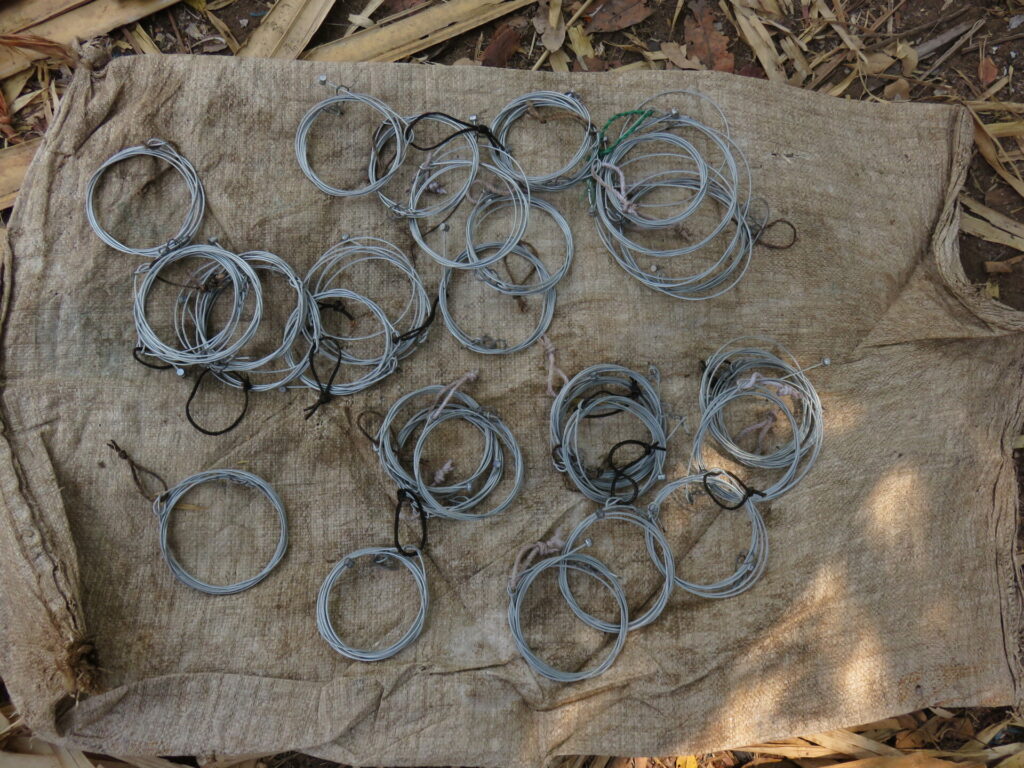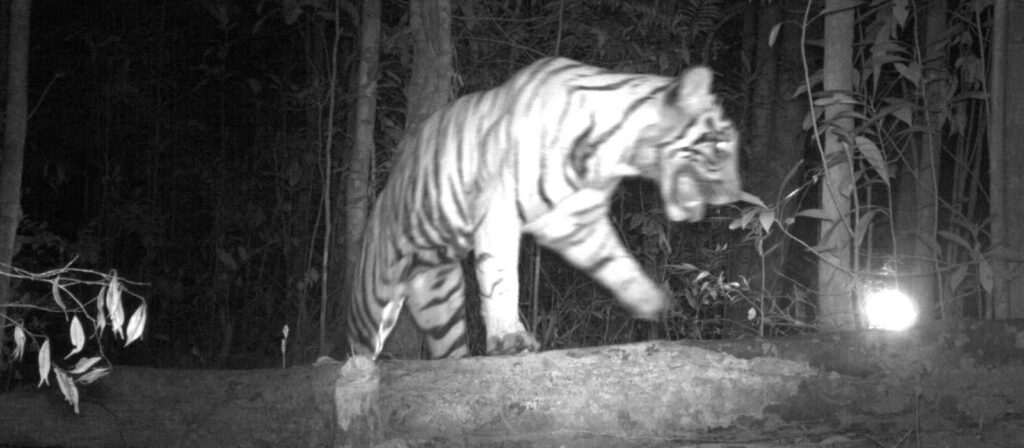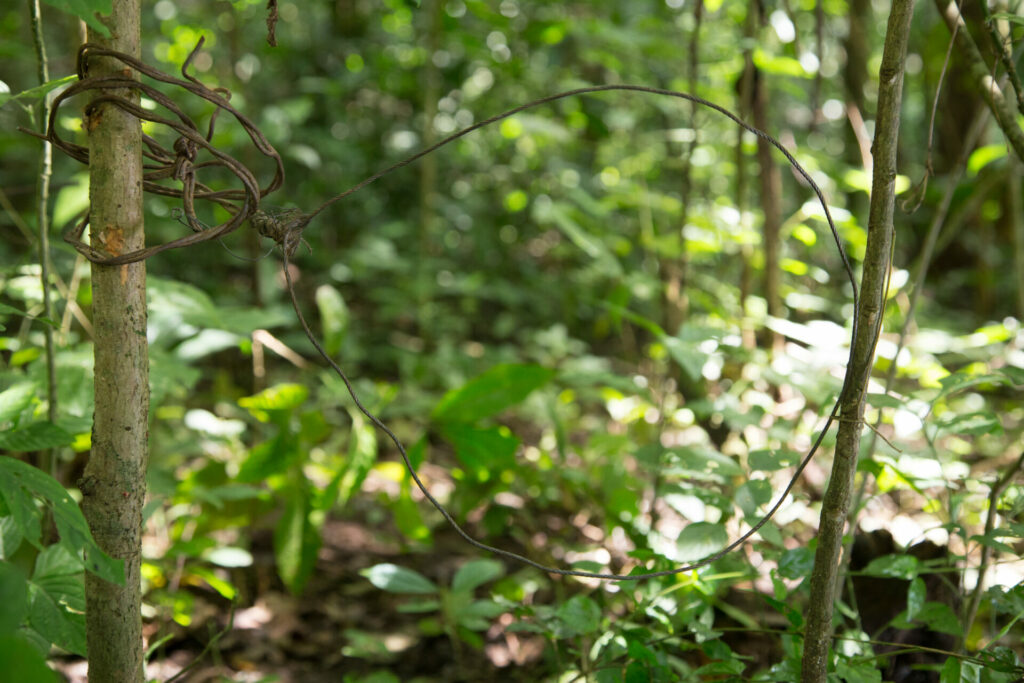The enormous danger posed by snares to Asia’s big cats is currently being highlighted in a campaign by the World Wildlife Fund (WWF).
Tigers, leopards, Asiatic lions and snow leopards are all at risk from these rudimentary traps, laid predominantly by poachers, on green forest floors or snowy mountain paths.
‘The Snaring of Big Cats in Mainland Asia’ report compiled by the WWF shows that 387 big cats across Asia were victims of snares over a ten year period between 2011-2021 and that over 12 million snares are set every year throughout protected areas in Cambodia, Laos and Vietnam.
While this figure is huge, the total number of snares laid across Asia is likely much higher, as many are placed outside protected areas, in remote areas and some are never identified.

Poachers kill big cats for Traditional Chinese Medicine, (TCM) decorative amulets, fur for fashion items, or even home décor. TCM trade is the fourth most lucrative illegal industry in the world, just after the trafficking of drugs, humans, and arms.
In that single day, I found a hundred wired snares. I found many animals caught—the sun bear, tiger, wild boar, barking deer, and many more. I found skulls. I felt furious. I destroyed all those snares, a hundred of them in a day.’
Merapi Mat Razi, Jahai Tribe
Other big cats are simply collateral damage, caught in traps laid for hoofed animals such as deer, in efforts to obtain meat or prevent crop destruction.
Snares Send Numbers Spiralling
In Malaysia, snares are a key reason tiger numbers have plummeted to fewer than 150 individuals with tiger populations in Belum Temengor – one of the world’s oldest rainforests – falling by half between 2016-2018, mainly due to snares.
Merapi Mat Razi, a member of an indigenous wildlife patrol team from the Jahai tribe in the Belum-Temengor Forest said: ‘One time I was patrolling, I was checking around one of my areas. In that single day, I found a hundred wired snares. I found many animals caught—the sun bear, tiger, wild boar, barking deer, and many more. I found skulls. I felt furious. I destroyed all those snares, a hundred of them in a day.’

The WWF report discovered that in India, where over half of the global population of tigers live, 59 per cent of tiger mortality cases and 73 per cent of leopard deaths were the result of snares.
It is also believed the last reported wild tiger in Laos fell victim to a snare.
Rudimentary Killer
The basic snares consist of flexible nooses made from brake cables, wire nylon, bike clutches, rope, and other and widely available materials, and most are barely visible, as they are often hidden by leaves, dirt, snow, gravel and dense undergrowth.
‘It’s very simple to remove a snare, but it’s difficult to find one,’ said Qiu Shi, a member of an all-female patrol team at the Dongning Forestry and Grassland Bureau in Heilongjiang province of Northeast China.
If an animal is trapped by the leg, a snare can break bones. If wrapped around its neck, the more the animal moves, the tighter the snare grips, leading to a slow death from the injuries or from thirst and starvation.
And even if they are able to escape, animals will likely die later due to persisting infections that cause pain or limit their mobility and ability to hunt.

The WWF says a number of measures need to be taken to combat this silent killer.
Firstly, by providing resources and incentives for local people to lead snare-reduction activities or raising awareness about the impacts of illegal wildlife trade.
Secondly, strengthening law enforcement surrounding wildlife protection and anti-snaring laws, whether by setting consistent definitions for snares and traps or by ensuring perpetrators are prosecuted.
At the same time, change campaigns can effectively reduce consumer demand for big cat parts and wildlife meat.
‘I removed my first snare in China 30 years ago and today these deadly traps still remain the biggest threat to the survival of Asia’s big cats,’ said Stuart Chapman, lead of WWF’s Tigers Alive Initiative. ‘We know what needs to be done, the solutions are effective and, if sustained, can lead to the rapid recovery of wildlife populations.’
Dr. Margaret Kinnaird, Lead, Wildlife Practice, WWF International, added: ‘Conserving big cats has the potential to produce significant biodiversity gains and provide a wide array of ecosystem services and direct benefits to local communities.
‘The fate of people and big cats are closely intertwined, and our approach to big cat conservation going forward will be demonstrative of our capacity to live in harmony with nature.’













